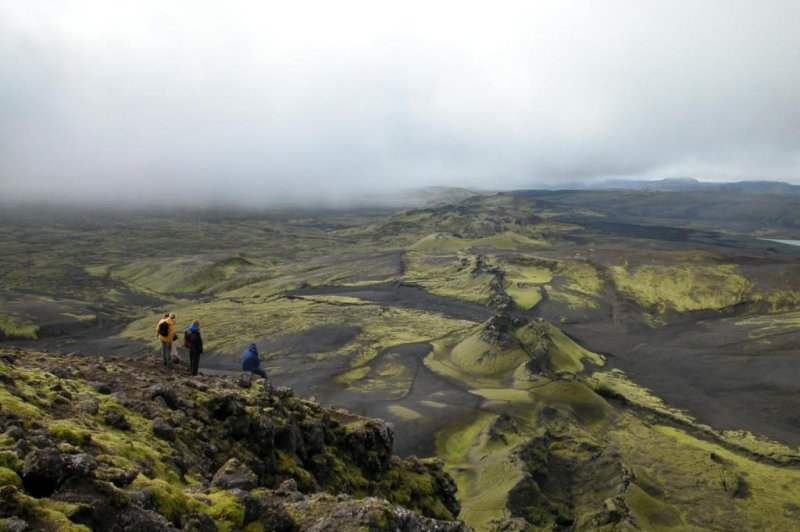Iceland's Laki volcano doesn't look like the typical mountainous caldera. Photo by Alan Robock/Rutgers University-New Brunswick
May 15 (UPI) -- The summer of 1783 was an unusually warm one for much of Europe. The heat caused crop failures and triggered social unrest.
But according to a new study, the strange weather wasn't caused by the eruption of Iceland's Laki volcano. Laki began erupting in June 1783. The eruption lasted eight months, spilling 120 million tons of sulfur dioxide into the atmosphere -- the largest high-latitude eruption in the last 1,000 years.
Scientists have previously suggested the volcanic eruption was somehow the cause of Europe's unusually warm summer.
The summer of 1783 was followed by an especially cold winter. In a paper published in 1784, Benjamin Franklin, the U.S. ambassador to France, speculated that Laki's eruption depressed winter temperatures in the Northern Hemisphere.
To determine what if any effects Laki's eruption had on global climate, scientists ran dozens of simulations of the North American climate in the late 18th century. Researchers used a high resolution climate model developed at the National Center for Atmospheric Research. The model simulated European climate patterns with and without the effects of Laki's eruption.
"It turned out, to our surprise, that the warm summer was not caused by the eruption," Alan Robock, a professor of environmental sciences at Rutgers University-New Brunswick, said in a news release. "Instead, it was just natural variability in the climate system. It would have been even warmer without the eruption. The cold winter would be expected after such an eruption."
The simulations showed the elevated summer temperatures were caused by a large mass of high pressure that persisted across Northern Europe for much of the summer, causing cooler Arctic air to bypass the region.
Researchers published the results of the simulations this week in the Journal of Geophysical Research: Atmospheres.
Laki's eruption also triggered the formation of a sulfuric aerosol cloud that hung over the Northern Hemisphere for several months. Historic accounts suggest the cloud caused noticeable air pollution in Europe. Reports from the period blamed the smelly, hazy air for an increase in headaches, respiratory issues and asthma attacks.
The pollution was more than just a nuisance. Some 60 percent of Iceland's livestock population perished within a year of the eruption. And across Europe, an increase in respiratory-related deaths followed.
"Understanding the causes of these climate anomalies is important not only for historical purposes, but also for understanding and predicting possible climate responses to future high-latitude volcanic eruptions," Robock said. "Our work tells us that even with a large eruption like Laki, it will be impossible to predict very local climate impacts because of the chaotic nature of the atmosphere."















